Inside The Lockheed Martin Plant That’s Spearheading Resurgent F-16 Sales
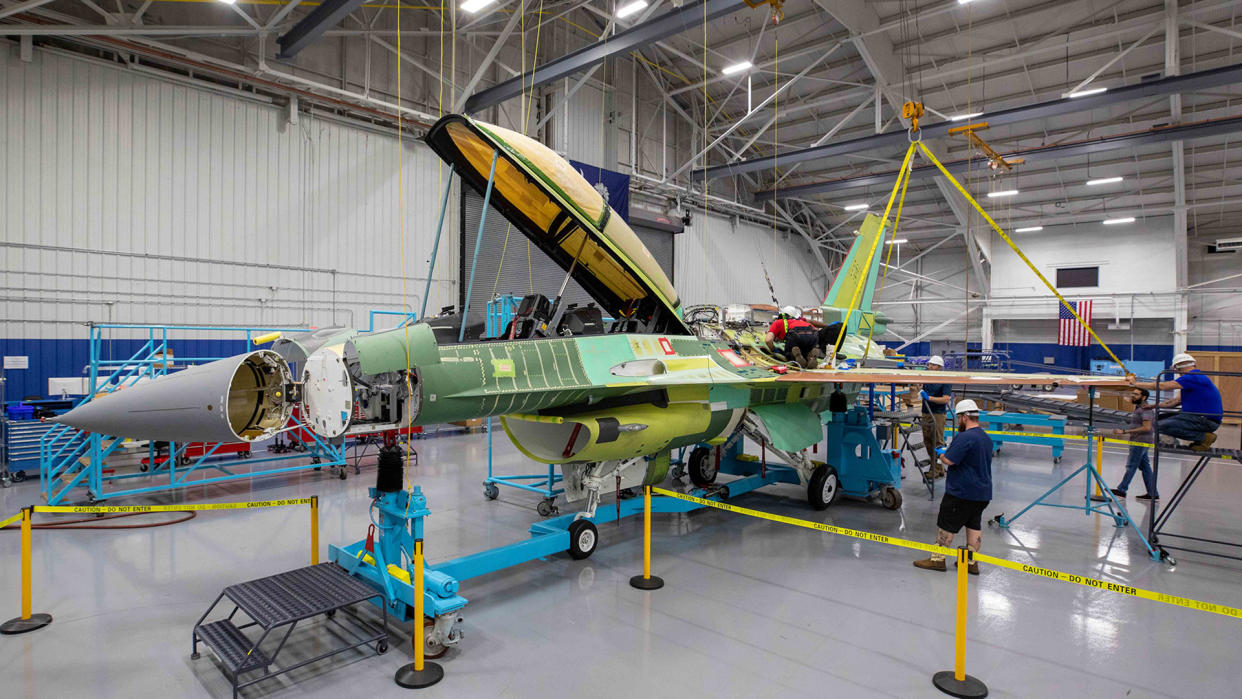
The sound of rivet guns pounding fasteners into place, a robot drilling thousands of holes in metal, cranes heaving pieces of yellow primer-painted fuselage into assembly jigs. The Lockheed Martin production facility in Greenville, South Carolina, is a hive of activity. Here, brand new F-16 fighter aircraft are being built on an assembly line that the manufacturer thought might never exist.

Seven years after the last F-16 Fighting Falcon was delivered from Lockheed Martin’s historic Fort Worth production facility, a new manufacturing line for the aircraft is now delivering brand new jets and reacting to meet unexpected resurgent demand for the latest generation of the prolific fighter.
The plant at Donaldson Airport, Greenville, is now the center of Lockheed Martin’s F-16 production effort. Here, the company is building brand new Block 70/72 variants of the fighter that’s known unofficially as the Viper for new and returning F-16 customers, including Bahrain, Bulgaria, Jordan, Slovakia, and Taiwan.
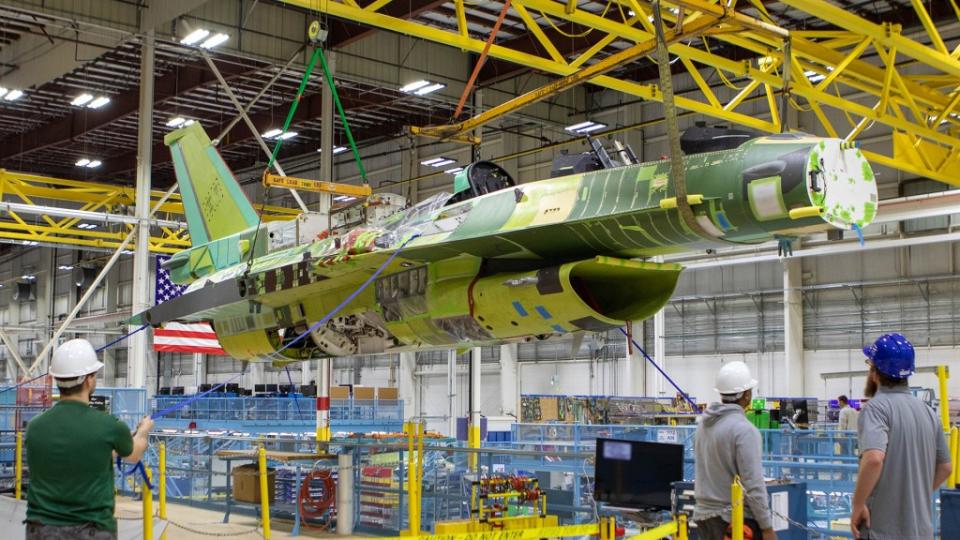
This year marks the 50th anniversary of the maiden flight of the F-16, which occurred on January 20, 1974. The very first YF-16 was rolled out at Fort Worth on December 13, 1973, and by November 2017 the last of 36 Block 52 F-16s for the Iraqi Air Force was delivered, heralding the end of almost 44 years of F-16 manufacturing at the Texas plant. During that time, some 3,620 F-16s were built in Fort Worth, initially by General Dynamics and then by Lockheed when it acquired General Dynamics’ Fort Worth Convair division in 1993.
The sprawling Texas production line pumped out an incredible 286 F-16s in 1987 at the height of production for the Viper. In addition, F-16s were built under license by the European partner nations that ordered the F-16A/B in large numbers in the 1970s and 1980s, with other examples assembled in South Korea and in Türkiye.
A total of 4,588 F-16s were manufactured globally before F-16 production was moved to Greenville in 2019. Fort Worth is now dedicated to F-35 Lightning II production and final assembly work, with the Greenville site having been repurposed from being a C-130 Hercules and P-3 Orion overhaul support facility to being the new home of the company’s F-16 program.
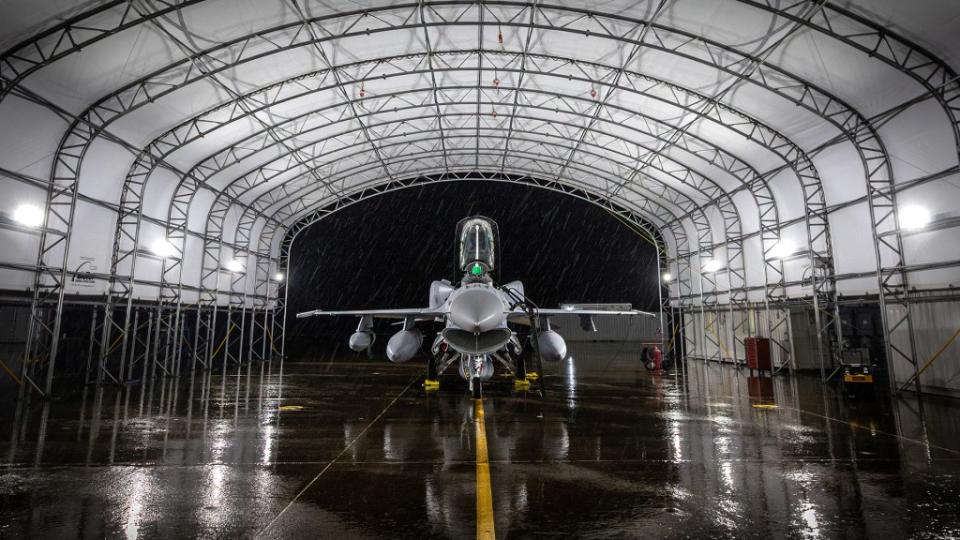
“We now conduct both F-16 production and the depot level maintenance of some CONUS [Continental U.S.] based U.S. Air Force F-16s here. We also have our program management operations all out of the same site,” says Caleb Hendrick, Lockheed Martin’s F-16 production director at Greenville. The facility, located on land that is owned by SC Tech Aviation Center, is marking 40 years as a Lockheed/Lockheed Martin facility this year.
“The F-35 work at Fort Worth was expanding in terms of the footprint and logistics. We just didn’t have the room or capacity to continue F-16 production there as well,” explains Hendrick. “So we decided to complete the final F-16s that were on contract at Fort Worth in 2017, and that was a demarcation line for the company.” Lockheed Martin looked at options for continued F-16 production.
Instead of petering out, new F-16 orders continued to roll in. “As soon as the orders started to mount up we made the move to bring the F-16 production line here,” explains Hendrick. Brand new Block 70/72 model F-16C/Ds would be built in the appropriately named hangar H16 at Greenville, which was previously used for C-130 maintenance.
In 2017, Greenville started the process of preparing for F-16 manufacturing. The aircraft’s production jigs and tooling were trucked from Fort Worth to Greenville in 2018, and the initial production work on the new F-16 line commenced in 2019 when the inaugural hole was drilled for a center fuselage of the first new Royal Bahraini Air Force F-16.
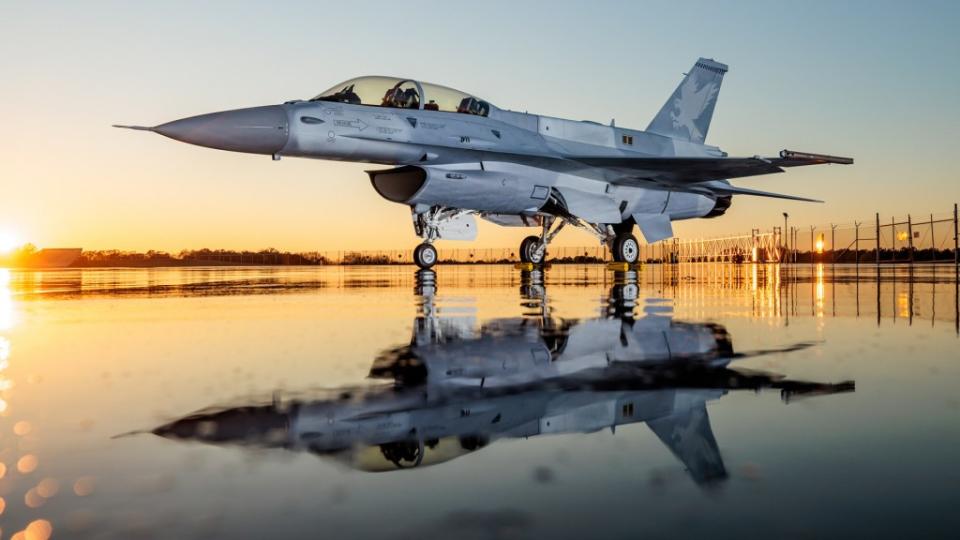
“Then the international demand for the F-16 blew up again! I’ve worked on many programs including F-22 Raptor, C-130 Hercules, and F-35, and I can tell you that I’ve never seen the focus as intense as it is right this minute with the F-16. For a program that we thought might go into the sunset, now we are ramping up to build four F-16s per month at our new full production rate.”
The mounting F-16 order book is impressive, with 140 fighters currently on contract. This comprises Bahrain (16 aircraft), Bulgaria (eight), Jordan (12), Slovakia (14), and Taiwan (66). With 11 of these delivered as of June 2024 (six for Bahrain and five for Slovakia), Lockheed had a backlog of 129 jets, including 24 that are being built for an undisclosed customer. Bulgaria has signed a Letter Of Authorization for an additional eight jets for its fleet.
“We are now at a total of 4,599 F-16s delivered throughout the life of the program [as of June 2024],” says Hendrick. “We see potential for 300 F-16 sales in addition to our current backlog of 131, based on international interest in Europe, Africa, and Asia.” Those 300 potential orders include Türkiye, which has a deal in progress for an undisclosed number of F-16s, which you can read more about here.
Block 70/72 – the ultimate Viper?
The Block 70/72 variant of the F-16 builds on years of incremental development work, facilitated by Lockheed Martin’s multitude of customers. This has resulted in a highly capable, and now extremely affordable fighter, that’s being offered to international customers through the U.S. Foreign Military Sales (FMS) program.
The Block 70/72 variant of the F-16C/D being built in Greenville incorporates a host of features from the upgrade variant known as the F-16V, which is underway within four countries as an enhancement package for existing aircraft. “The Block 70/72 and Viper or ‘V’ upgrades represent new blocks/new capabilities for the F-16. The C/D designation is simply the well-known, ongoing standard designation for whether a jet is a one-seater or a two-seater,” Lockheed Martin states.
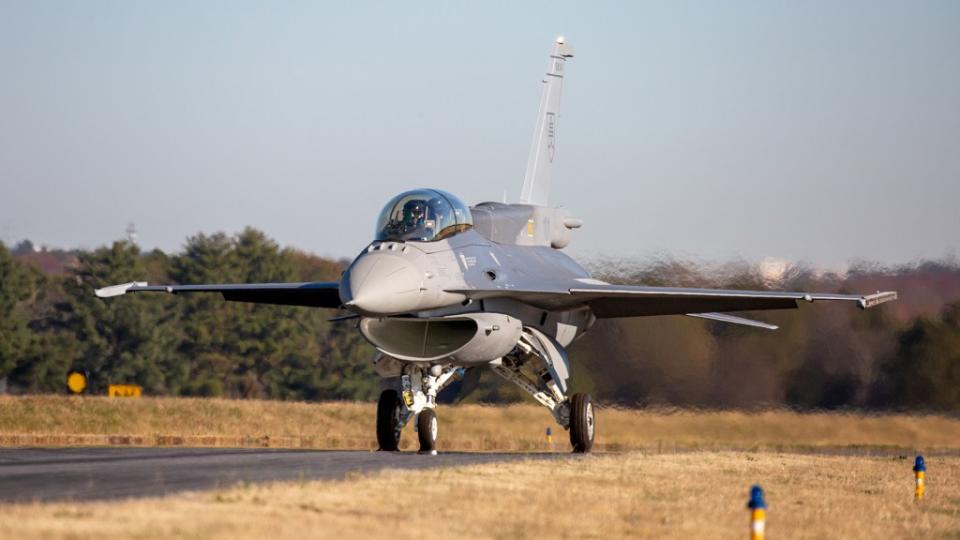
At the heart of the F-16V’s updated avionics suite is the Northrop Grumman AN/APG-83 Scalable Agile Beam Radar (SABR), which features an active electronically scanned array (AESA). This provides the jet with much-improved detection and engagement ranges, fidelity, major increase in ability to spot low-flying small signature targets like cruise missiles, and electronic countermeasure resistance. It’s also far more reliable, without any components needed to physically move the sensor array around.
The F-16V also features a new Center Pedestal Display (CPD) in the cockpit. The large multi-function display augments the two 4×4-inch displays on each side of the Head Up Display control interface, and it offers greater space to display much more detailed information.
The Block 70/72 draws heavily on the F-16V, but as a new-build airframe that offers a service life that’s been increased from 8,000 to 12,000-hours. Some 70 percent of the airframe has been modified compared to the early F-16A/Bs, building on years of historic technical data and learning from structural enhancement programs such as Falcon STAR and Falcon UP, which reinforced certain critical areas of the F-16’s airframe that were susceptible to fatigue. The new build F-16s also come with the choice of engine — the Block 70 has the General Electric F110-GE-129 that offers 29,000 pounds of thrust and the Block 72 has the Pratt & Whitney F100-PW-229 with 29,160 pounds of thrust.
“The modern Block 70/72 F-16 has taken all the learning across the entire evolution of the Viper, right back to the very first A-models,” says Lockheed Martin F-16 test pilot Chris “Sasquach” Nations. “We’ve improved upon it to the point that now we have solved many of those early issues and created a near flawless, highly capable aircraft that is driven towards producing the results that its customers require.”
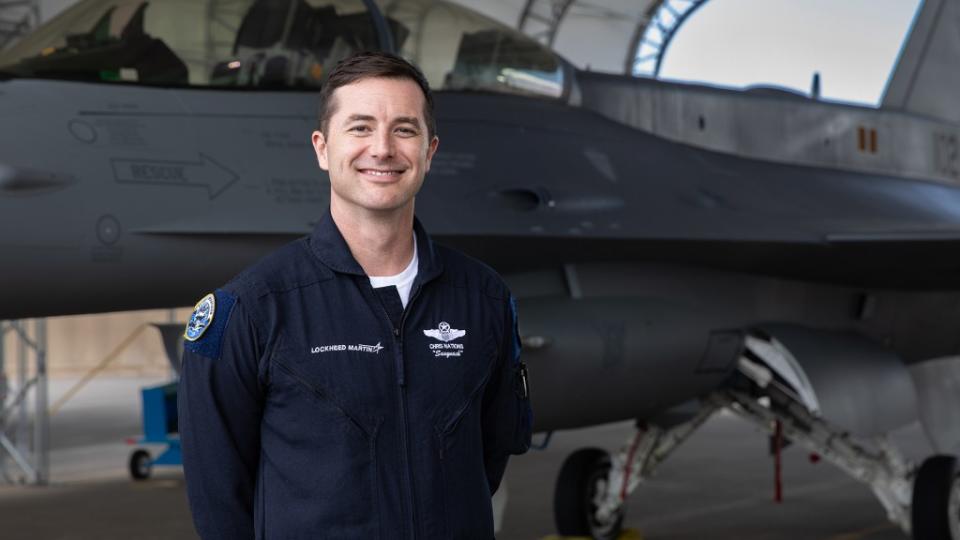
“Inside the cockpit, there are significant improvements. The biggest one that you’ll notice is the CPD that gives the pilot an additional 6×8-inch screen. The avionics now allow me to pick and choose whatever display I want to use for what purpose. I can repeat displays across two different sensors, I can centralize maybe a map on the CPD because it’s a bigger, wider, area of real estate that allows me to really look into that map.”
“Or if I have a targeting pod, I have the ability to transition where that image is being displayed. You can place whatever system you want on whichever display, and that capability for the pilot is game-changing. You’re not locked into one item in one spot, you can really centralize whatever works for you and then capitalize on it so that you are the highest performing individual in that jet.”
Neatly pairing the cockpit displays with the aircraft’s sensors is a critical factor in maximizing the pilot’s ability to effectively conduct a mission. “There’s a common misperception between sensor fusion and sensor correlation,” Nations says. “What we’re working with in the F-16 is the highest levels of correlation. We are taking all those sensors and placing them into a system that allows the pilot to make the optimal solution based on the information presented.”
“Additionally, the new avionics in the Block 70/72 allow simultaneous operation of those systems from the front seat and the back seat of the two seat F-16D, whereas legacy F-16s gave the back seater a simple repeater of the other cockpit’s information. Now, both individuals in the plane can simultaneously interact with it in a way that’s never happened before.”
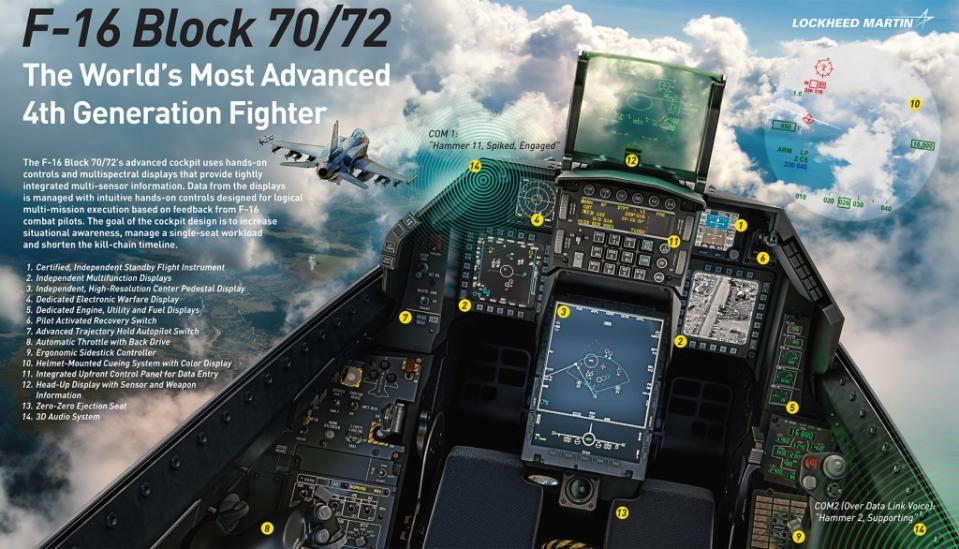
“One of the key capabilities of the Block 70/72 is the automatic ground collision avoidance system [Auto-GCAS]. We’re talking about a system inherent to the plane that saves pilots when they can’t save themselves. Having done this for many, many years, unfortunately, I have lost friends who have flown into the ground. I wish we’d had Auto-GCAS earlier. I’ve been working on it personally for over a decade, improving the algorithms and making sure that the jet provides the optimal solution while not interfering with the pilot’s normal operational missions.”
Auto-GCAS is designed to take control and safely recover the aircraft if the pilot becomes incapacitated, usually by pulling too many g-forces, which can lead to them becoming unconscious or severely disoriented due to a lack of blood flow to the brain. “It’s a real threat, something that we train to prevent, but it’s still something that’s always present in the background,” explains Nations. “The GCAS system will recognize the fact that this individual is not responding and is not trying to save the aircraft.”
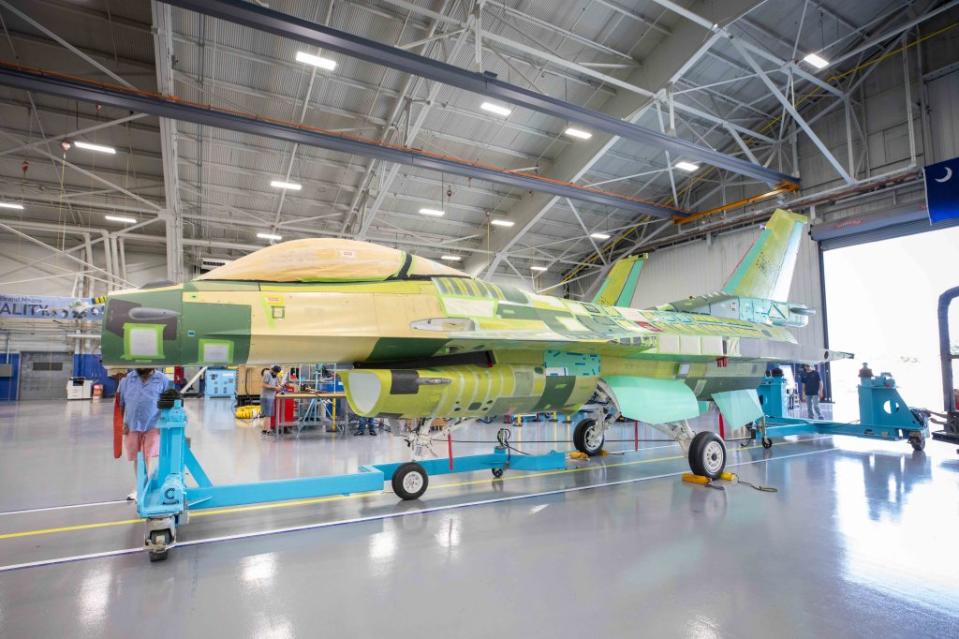
“Once it recognizes that ground collision is imminent, if it doesn’t sense any pilot input it takes over the controls and provides an optimal solution to angle the jet back up into the sky, which gives the individual time to recover and subsequently resume their own control of the flight. The GCAS capability of this plane is an improvement upon all the other GCAS systems that have gone before it, and we’re constantly iterating and improving it to make sure the system is as safe as possible.”
Production begins in Greenville
The first F-16 to enter production at Greenville was a two-seat F-16 Block 70, D-model for Bahrain. It took three and a half years to build from that first hole being drilled to its first flight on January 24, 2023. That manufacturing process has now been whittled down to 11-12 months, according to Hendrick. “We are making modifications to our facilities here and building new infrastructure that will make sure we can ramp up,” Hendrick explains. “We have a new Material Flow Center that’s designed to maximize getting the parts, tools, everything that we need here, faster.”
“When the site started production in 2019, we had approximately 25 technicians on the floor. As we’ve been ramping, we have grown our touch labor in Hangar 16 to nearly 700 across all shifts. Having stood up our production here with the help of that core knowledge and experience from Fort Worth, we are now beginning to stand on our own here in Greenville.”
The F-16 production line in Hangar H16 comprises four main stages. The build process begins with the center fuselage section, which is built by Lockheed Martin and by co-producers Hellenic Aerospace Industries (HAI) in Greece. The increased production rate will soon see PZL Mielec, a Lockheed Martin subsidiary in Poland, also manufacturing center fuselages. The F-16 program includes 470 active suppliers, 28 internationally in 12 nations, and the major components are produced in eight countries.
At full rate production, two center fuselages will be built by Lockheed Martin, and two will be built by co-producers each month and shipped to Greenville. Korean Aerospace Industries (KAI) also manufactures some parts for the center fuselage. “Our co-producers are critical to the program as we expand production rate, and we’ve really stabilized the program, and with our co-producers we have a well set schedule now,” says Caleb Hendrick.
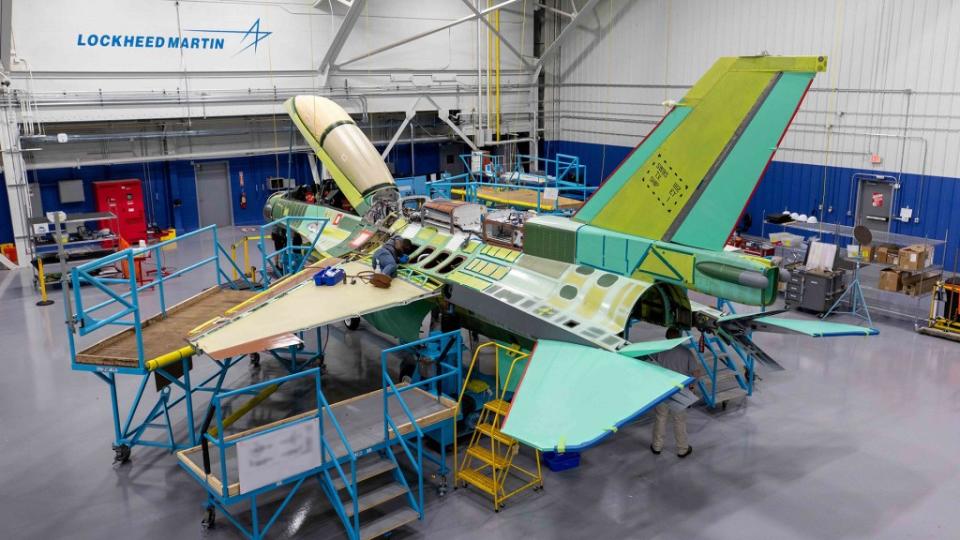
The aft fuselage is currently manufactured solely by HAI, but that capacity will also be increased soon through the addition of PZL Mielec manufacturing. Hendrick says that the Greenville plant doesn’t currently have the footprint to undertake aft fuselage production on-site. The forward fuselages include the cockpit section and these are exclusively manufactured by Lockheed Martin in Greenville due to International Traffic in Arms Regulations (ITAR).
Once complete, the three major sections are moved to one of four mating stations, where they are carefully cranked into place and joined as one complete fuselage. This procedure will take approximately one month to complete at full-rate production. The mating process requires a lot of manual shimming, which Hendrick describes as “using aluminum pieces used to fill tolerance gaps that are then buried and sealed into the mated structure.” These tolerances vary, and they are currently manually measured and scribed by engineers. “We are moving towards predicted shimming, using 3D scanning technology and digital modeling,” Hendrick said.
The vertical stabilizer, which is made by Israel Aerospace Industries (IAI), and structures for the Conformal Fuel Tanks (CFTs) are also added at this stage. All Block 70/72 F-16s are piped for CFTs regardless of whether the customer procures these features that add an extra 3,000 pounds of fuel to the F-16’s capacity. The Block 70/72 also comes with the drag chute as standard. The two-seat F-16D Block 70/72 is built with the ‘big spine’ as standard, which is used to house various mission systems and avionics that are displaced by the second cockpit.
The final phase of the build process in H16 is known as Integration and Assembly. Again, it has four stations, and here the month-long process adds the undercarriage and the final wiring to the airframe. Once complete, the aircraft is moved on its own wheels to initial painting, which adds a coat of primer. Following this, the aircraft moves to Final Assembly and Check Out (FACO), where the wings, horizontal stabilizers and engine are added, before one more visit to the paint barn where the final color scheme is added.
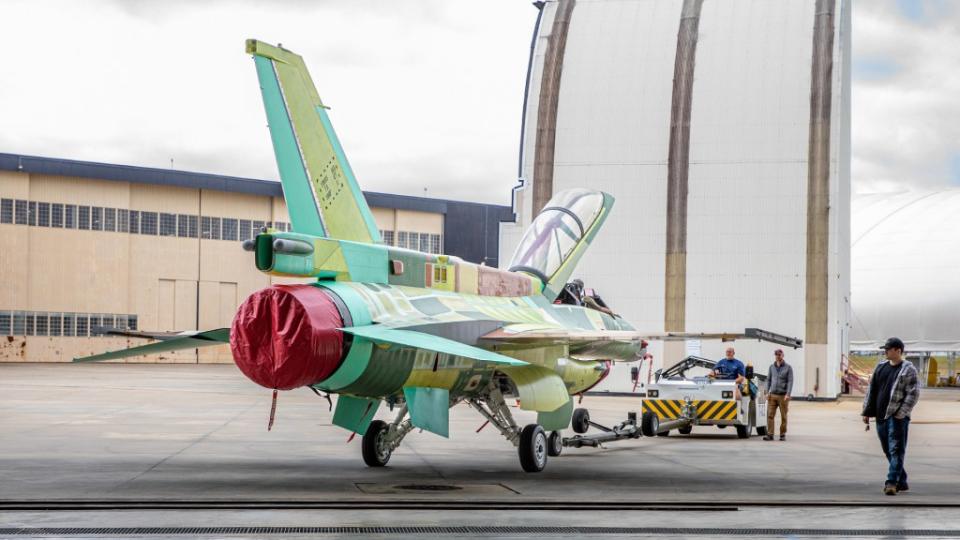
Manufacturing the new Block 70/72 F-16 still relies heavily on aluminium, with very few composite structures. Greenville has already introduced 15 new production techniques for the F-16, including one that’s taken directly from the F-35 program. A new automatic robot is now used to drill, ream, and countersync some 2,800 holes in the center fuselage to prepare it for application of the outer skin surface. It makes for a process that’s faster, more accurate and cheaper. The program is also now using augmented reality in the process of the installation of wiring harnesses, to help engineers route cabling inside the aircraft’s structure.
“Since 2017, we have continued to implement new 1LMX technologies into Block 70/72 production to maximize efficiency. For example, the Virtual Program Assistant is an infrastructure hub for program management, program reporting and program analytics, enabling improved and predictable program performance. We’re also implementing augmented reality to do functional checks and troubleshooting,” Lockheed Martin said in a statement.
Into flight-testing
Once completed, the factory-fresh and newly painted F-16 is required to complete a rigorous series of production acceptance tests prior to being delivered to the customer. “The journey to the flightline is one that has been well thought-through,” says pilot Chris Nations. “The individuals behind the scenes are constantly checking everything you could possibly imagine to make sure that [the jet] is coming out in pristine quality. So when I leave the ground for the very first time I am content, I’m happy and I feel secure.”
“The maintainers complete all their ground checks before I ever see the jet. Once on the flightline we follow that up with avionics and power-on checks, making sure that all the systems are operating and that we have a fully functioning avionics setup. I’m there as an additional set of eyes to look over the aircraft one more time and I do a full walk-around, making sure everything looks pristine from the outside.”
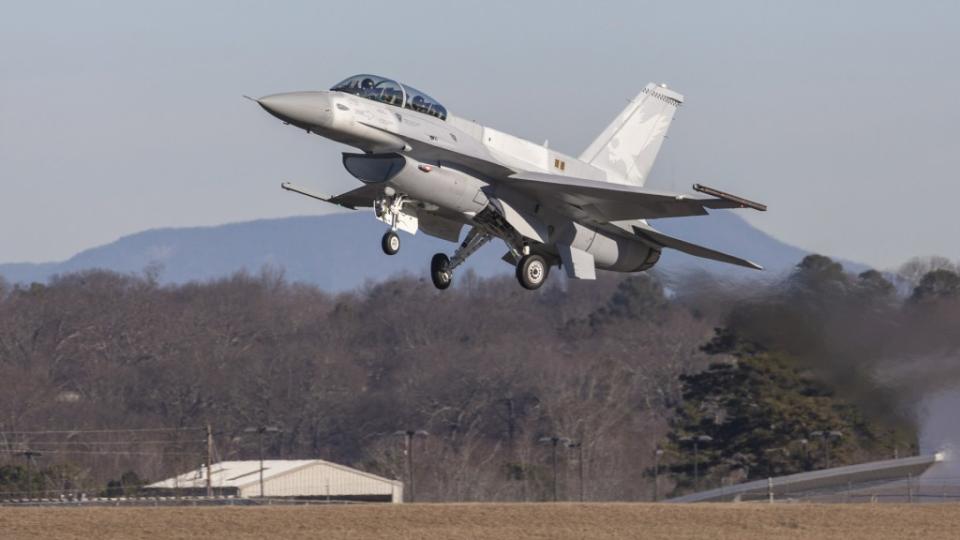
“Then I hop inside the jet, turn on all the systems and the avionics to make sure they are still operating as expected. After that, we go through all the emergency processes. We make sure that the emergency power unit operates, make sure the jet fuel starter is doing exactly what it’s supposed to. We do full confidence checks in every single system. We even go so far as doing high-speed taxi tests the first time we take the jet onto the runway. We do a run-up, get up to speed, making sure that the flight controls are operating with the proper amount of airflow going over them and then I bring it to a stop ensuring the brakes work, and bring the jet back in. That’s 34 separate different checks right there. All before we ever take off on the first flight.”
“The first flight is again a system integrity check, looking through all the engine systems, all the in-flight possibilities. Once we’re confident in the full life-support capability, the flight controls, the power units, then we bring it back down before another flight. This time we’re checking out all the avionics, making sure the radar is working exactly how it’s supposed to, making sure everything is integrating the way it was designed. One of the main checks we do in that second sortie is ensuring that the GCAS is operating. We obviously put a couple of buffers in there because we don’t want to point ourselves at the ground, but we’ve managed to prove out the system so that when the customer receives that plane, they know it’s going to be there in the background to save their lives.”
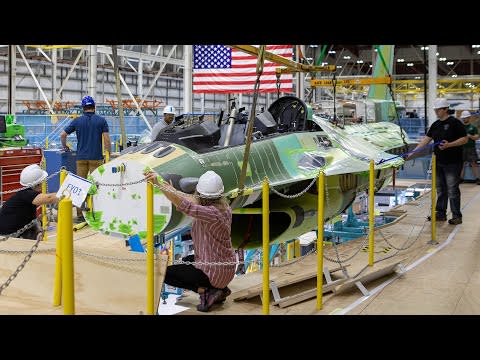
As part of the pre-delivery testing, all new production F-16 Block 70/72s will conduct flight tests that include supersonic flying. The airspace, altitudes, times, and flight profiles are directed by the Federal Aviation Administration and the U.S. Air Force regulations.
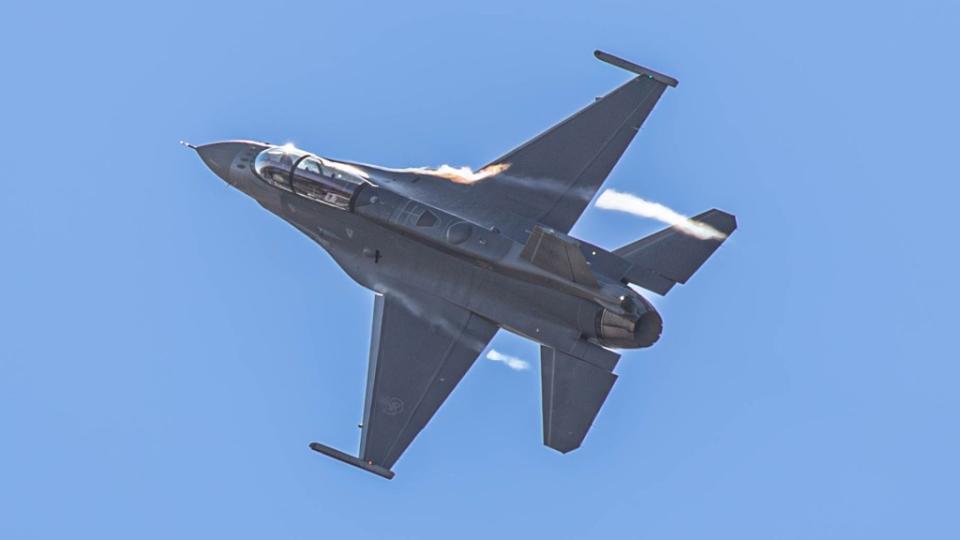
Once the Lockheed Martin team adds its stamp of approval to a jet, it is handed over to a U.S. government team that will repeat the acceptance process, and conduct some additional checks including the addition of external fuel tanks, checking they are feeding fuel in preparation for the delivery ferry flight to the customer.
Why Greenville makes sense for the F-16
Lockheed Martin’s Greenville plant makes a significant economic impact in South Carolina, contributing $1.3 billion annually to the state economy. While core capability and know-how for F-16 production came from Fort Worth, local talent and workforce opportunities are expanding. Strong ties with the military in South Carolina, particularly with the USAF F-16 communities at both Shaw Air Force Base and McEntire Joint National Guard Base, mean that there is no shortage of experienced Viper maintainers on tap. More than 40 percent of the Lockheed Martin workforce in Greenville comes from the veteran community, including former F-16 crew chiefs and maintainers who now work on the assembly line and in flight operations.
“Just last night I met a new mechanic who was drilling part of the center fuselage on the production line,” says Caleb Hendrick. “He was telling me about his background as an F-16 crew chief and how he’s been working here for three months. He has the dual capability of knowing the airplane well and is also being certified to be a structural mechanic. We’ve also worked with the local technical colleges like Greenville Tech to create apprenticeship programs so we can grow that core manufacturing capability. It means we are in a fortunate position with our staff to be able to ramp up our F-16 production.”
Moving F-16 production to Greenville has enabled Lockheed Martin to respond to the unexpected demand that now calls for the ramp-up in F-16 production rates. Evaluating why this demand has arisen, Hendrick says: “Pound-for-pound, at the cost point, the bang for the buck you can get with the F-16 is huge, and it’s still proving to be a very versatile aircraft.”
The availability of new F-16s presents a useful alternative acquisition route for some customers who may not want to or may not be able to procure F-35s for different reasons. The F-16 Block 70/72 offers a level of commonality and interoperability with the F-35. “Approximately 95 percent of the SABR [radar] mode suite comes directly from the F-35’s AN/APG-81 AESA radar, including robust and proven Electronic Protection to counter the most advanced threats,” according to the radar’s manufacturer Northrop Grumman.
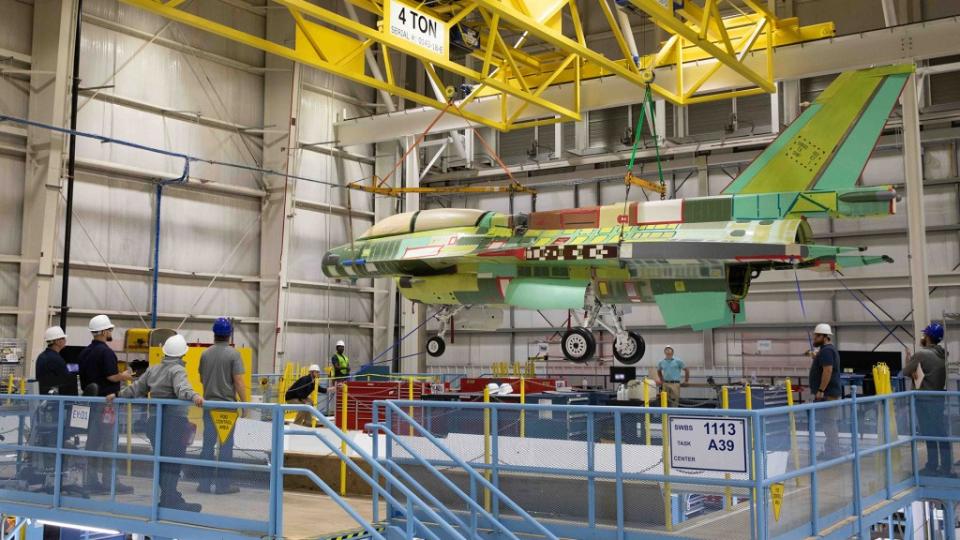
“I see the interoperability elements as a big driver of the demand for the F-16,” says Hendrick. “Customer nations are strengthening their international diplomatic ties, while also buying a capable and affordable 4.5-Generation multi-role fighter.”
The international market may not be the only source of success for new Block 70/72 F-16s. The USAF’s oldest serving Block 30/32/40/42 F-16s were built from the mid-to-late 1980s, and they are becoming increasingly hard to maintain. Similar to how the USAF is procuring F-15EX Eagle IIs to quickly recapitalize its aging F-15C/D fleet in the Air National Guard, the Block 70/72 F-16 could potentially offer the USAF a similarly straightforward option to refresh its F-16 fleet.
The USAF received its first F-16s in 1978, and a total of 2,231 were delivered to the service by the time the very last example of the F-16C Block 50 was handed over on March 25, 2005. A senior member of the Senate Armed Services Committee said in May 2024 that the Air Force should consider a buy of 120 new Block 70/72 F-16s, amongst other aircraft, under what he called a “general investment” for the USAF to help maintain force levels.
Regardless of the chances of a new domestic F-16 sale, Lockheed Martin’s F-16 production hub at Greenville is well-placed to meet the demands of a resurgent F-16 customer base. The Viper is showing that it remains as relevant to air forces today as it did when it first started out 50 years ago.
Contact the author: jamie.hunter@teamrecurrent.io

